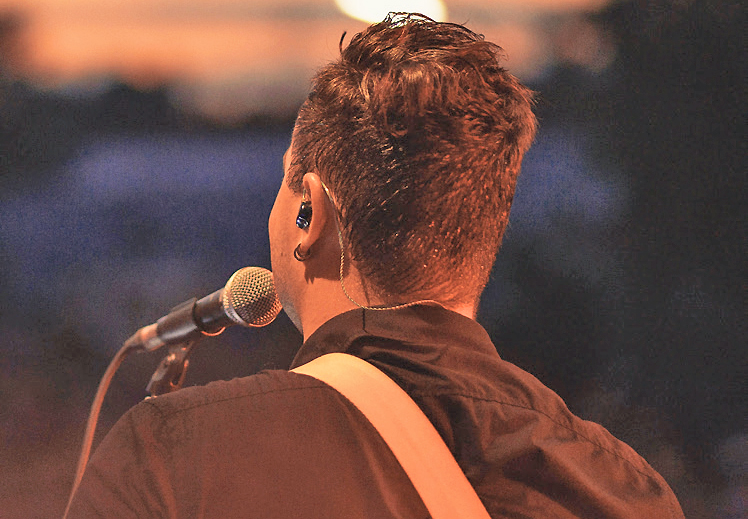What Are In Ear Monitors Used For in Photography?
As a professional photographer, you may often find yourself navigating through the challenges of audio in various environments. You might have heard of in ear monitors (IEMs) but are still curious about what they are and how they can enhance your work. The question of what are in ear monitors used for is one that opens up quite a new dimension in the realm of photography, especially during events, concerts, and other scenarios that involve synchronized audio-visual production.
In this article, we will explore the significant role that in ear monitors play in the photography industry, along with their benefits, how they work, and tips on using them effectively for your photography projects. We will also delve into various situations where having IEMs can prove to be invaluable.

Understanding In Ear Monitors
At its core, in ear monitors are devices that allow audio signals to be transmitted directly into the ear. This gives photographers a way to listen to audio cues, instructions, or ambient sounds without external noise interference. They are commonly used amongst musicians, but their applications extend far beyond that. Whether you are covering a live concert or shooting a commercial, having direct audio feed in your ears can substantially improve the quality of your output.
Why Photographers Should Consider Using In Ear Monitors
As photographers, our primary focus is often on capturing the perfect shot. However, audio components are equally critical in specific scenarios, especially in recording events or when you're coordinating with a team. Here are a few reasons why you might consider investing in in ear monitors:
- Real-time Audio Feedback: IEMs provide instant audio feedback that can be pivotal during events like weddings or concerts.
- Monitor Sound Levels: When shooting videos, you can monitor sound levels, ensuring everything is at an optimal volume for the best result.
- Communication: They allow for clear communication with your team without using hand signals or shouting, which can be distracting.
- Ambient Sound Control: In ear monitors help block out surrounding noise, allowing you to focus better on the task at hand.

Common Uses of In Ear Monitors in Photography
In ear monitors can be handy in various photography scenarios:
- Event Photography: During weddings or large gatherings, it may be crucial to hear specific instructions from a coordinator or a director.
- Live Performances: When documenting concerts, in ear monitors enable photographers to capture audio and visual components simultaneously, enhancing the overall composition.
- Commercial Work: For shoots involving multiple professionals (like a director, sound engineer, and others), having direct communication can result in a smooth workflow.
How In Ear Monitors Work
Understanding how in ear monitors operate can help you grasp their value better. IEMs function by transmitting audio signals from the source (like a mixer or a receiver) directly to the ear canal. This can be particularly beneficial in noisy environments where traditional speakers may not provide the clarity you need. They can be either wired or wireless, giving you the freedom to choose according to your setup.
For further insight, you can check out how in ear monitors work.

Selecting the Right In Ear Monitors for Your Photography Needs
When it comes to choosing in ear monitors, there are several factors to consider to ensure you make the right decision:
- Sound Quality: Look for IEMs that offer excellent sound reproduction and clarity.
- Comfort: Since you'll likely be wearing them for extended periods, comfort is key.
- Durability: Choose models made of sturdy materials that can withstand the rigors of photography sessions.
- Compatibility: Ensure that your IEMs are compatible with the devices you'll be using them with.
Effective Usage of In Ear Monitors During Photography
Here are some tips for effectively utilizing in ear monitors in your photography workflows:
- Testing: Make sure to test your IEMs before the event, to ensure audio signals are clear and functioning.
- Adjustment: Adjust the volume to suit your environment, especially in loud settings.
- Practice: Familiarize yourself with adjusting settings mid-shoot, so you can keep your focus on what you are capturing.
FAQs About In Ear Monitors in Photography
1. How do in ear monitors improve my photography?
In ear monitors improve your photography by allowing you to receive real-time audio feedback, enhancing coordination with your team, and enabling better sound management in dynamic environments.
2. Are in ear monitors suitable for all kinds of photography?
While they are particularly beneficial for event, commercial, and performance photography, any scenario where audio is present can benefit from their use.
3. Can I use my phone to connect to in ear monitors?
Yes, many in ear monitors can connect to a smartphone via an audio cable or Bluetooth, making them versatile for different setups.
As an Amazon Associate, I earn from qualifying purchases.

